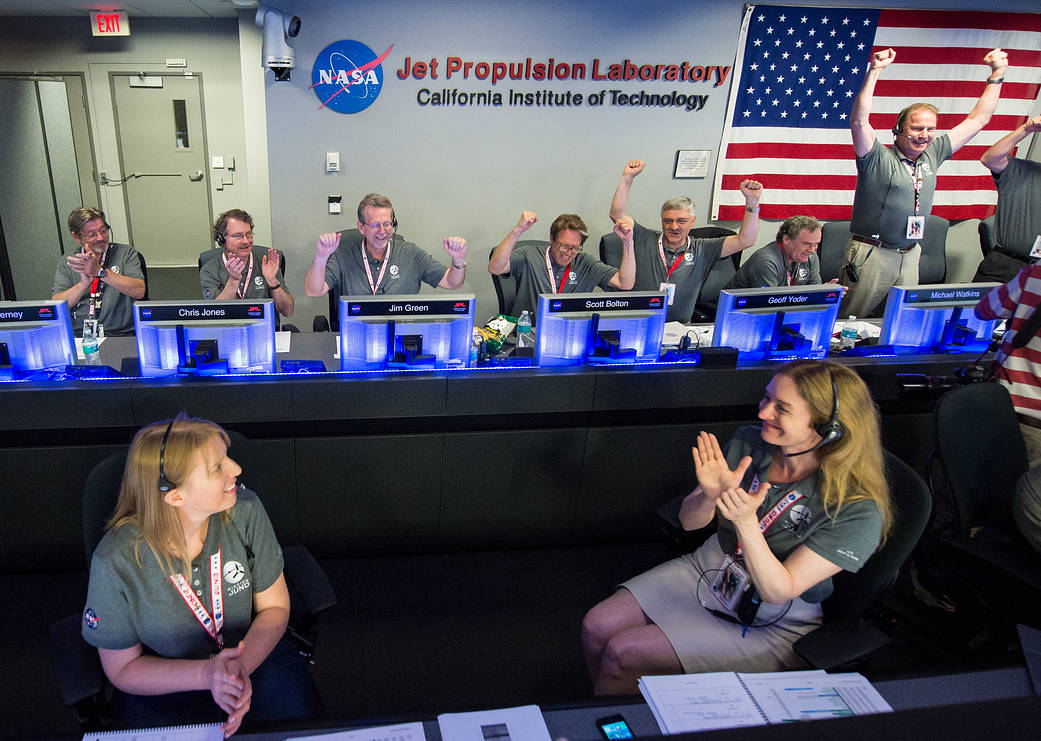
The Juno team celebrates after receiving confirmation from the spacecraft that it had successfully completed the engine burn and entered orbit of Jupiter, Monday, July 4, 2016, in mission control of the Space Flight Operations Facility at the Jet Propulsion Laboratory in Pasadena, CA. Confirmation that the burn had completed was received on Earth at 8:53 p.m. PDT (11:53 p.m. EDT). The Juno mission launched August 5, 2011 and will orbit the planet for 20 months to collect data on the planetary core, map the magnetic field, and measure the amount of water and ammonia in the atmosphere.
From left to right, Jack Connerney, Juno deputy principal investigator and magnetometer lead co-investigator, NASA’s Goddard Space Flight Center; Chris Jones, associate director for flight projects and mission success, NASA’s Jet Propulsion Laboratory (JPL); Dr. Jim Green, Planetary Science Division Director, NASA; Scott Bolton, Juno principal investigator, Southwest Research Institute; Geoff Yoder, acting Associate Administrator for the Science Mission Directorate, NASA; Michael Watkins, director, NASA’s Jet Propulsion Laboratory (JPL); and Rick Nybakken, Juno project manager, Jet Propulsion Laboratory (JPL).
Photo Credit: (NASA/Aubrey Gemignani)




























